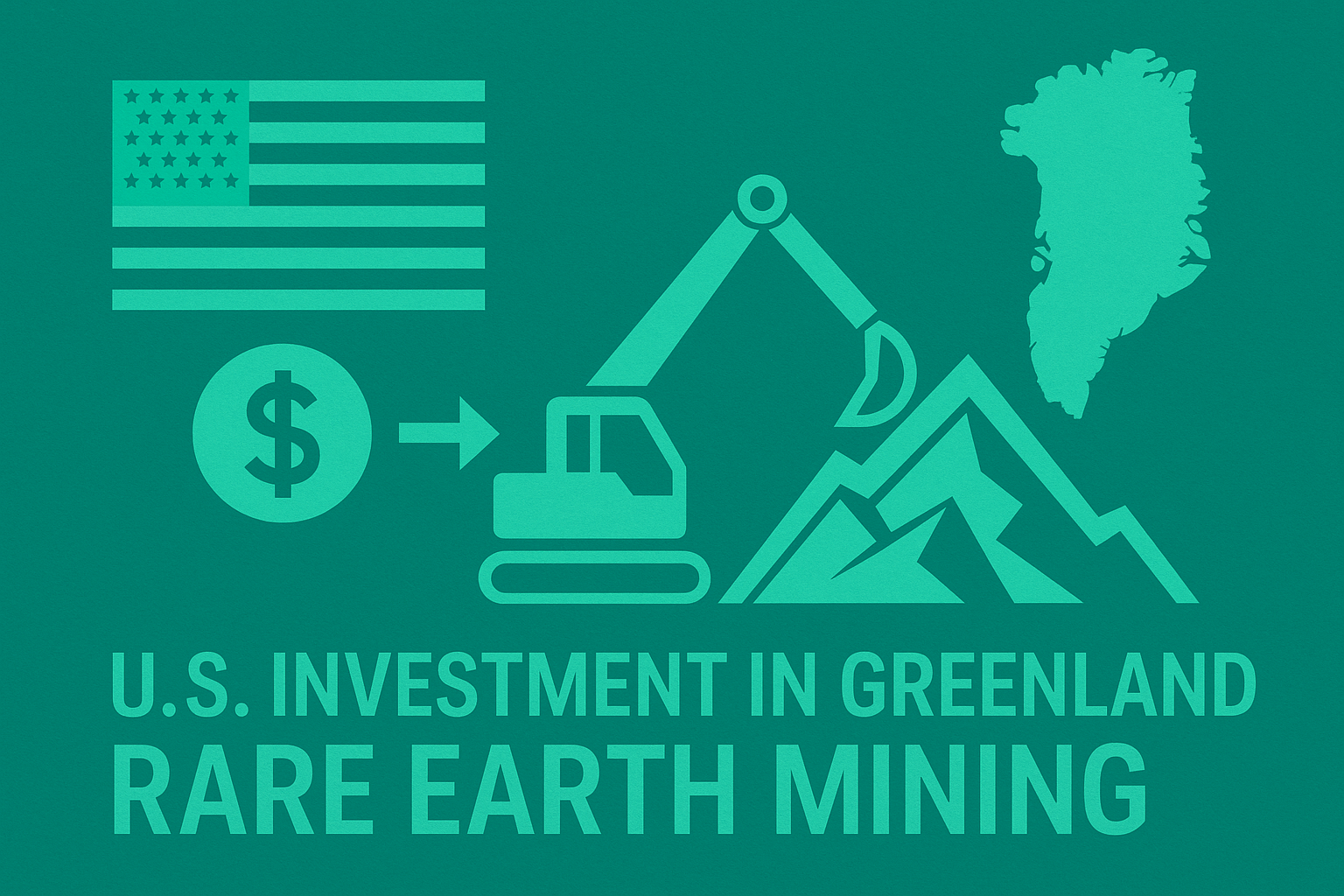Wrote By:Global Economist 2025/10
Introduction
The Tanbreez rare earth mining project in Greenland has emerged as a focal point in the United States’ strategic push to secure critical minerals. With the U.S. Export-Import Bank (EXIM), the Trump administration, and private operator Critical Metals Corp. accelerating involvement through loans and potential equity stakes, Greenland is poised to play a central role in reshaping global supply chains. This report analyzes the economic significance, geopolitical context, risks, and outlook of this landmark investment.
1. Washington’s Strategic Goals: From Dependence to Dominance
Breaking Away from China
Roughly 70% of global rare earth refining capacity resides in China, leaving the U.S. exposed to strategic vulnerabilities. Rare earths are indispensable for defense, electric vehicles, and renewable technologies, making supply disruptions a core national security risk.
Why Greenland Matters
Greenland’s Arctic location makes it strategically vital for the U.S. Department of Defense. Securing rare earth resources here is not only an issue of supply diversification but also a lever of geopolitical influence in the Arctic against China and Russia.
2. Key Developments in Financing and Equity Participation
- EXIM’s $120 million loan Letter of Interest (LOI)
A U.S. government-backed financing facility that lowers capital risk for private investors. - Equity stake negotiations (approx. 8%) by the U.S. government
Moving beyond debt to equity signals that Washington views Tanbreez as a strategic national asset. - Critical Metals raising its ownership stake to 92.5%
Consolidating control strengthens project governance and gives the U.S. aligned operator dominance. - 10-year supply contract with U.S. processing facility (up to 10,000 tons annually)
Institutionalizes a supply chain that links Greenland extraction with U.S. refining and manufacturing.
3. Economic Implications
(1) Supply Security and Price Stabilization
Direct U.S. investment provides a de facto price support mechanism, helping stabilize markets during supply shocks—similar to agricultural price support policies.
(2) Industrial Spillovers
Greenland’s role as a seed resource supplier underpins the U.S. goal of building domestic refining and magnet manufacturing capabilities, supporting jobs and reindustrialization.
(3) Impact on Global Investment Flows
U.S. involvement is likely to catalyze further capital flows into rare earth projects in allied nations (Australia, Canada, Africa), accelerating the global “China-free” supply chain.
4. Risks and Uncertainties
(1) Environmental and Local Resistance
Greenland enforces strict environmental regulations, especially regarding uranium byproducts. Local opposition could delay or even derail progress.
(2) Geopolitical Competition
China and Russia are intensifying their Arctic presence. Investment in Greenland is thus part of a new Cold War over resources.
(3) Market Volatility and Capital Risks
Rare earth prices are highly volatile. The capital-intensive nature of mining projects makes them vulnerable to downturns in global demand and pricing cycles.
5. Future Outlook
- Formalization of U.S. equity participation
Would anchor Washington’s influence in the Arctic and secure a long-term supply chain. - Potential Japanese and European involvement
With supply risks exceeding U.S. capacity alone, joint investment frameworks with allies (e.g., JBIC, European Investment Bank) are likely. - Reshaping supply chains
Greenland-sourced rare earths could command a premium as “China-free” certified resources, reshaping global pricing and trade flows in defense, EV, and renewable sectors.
Conclusion
The U.S. investment strategy in Greenland’s rare earth mine represents more than just resource acquisition. It is:
- A geopolitical deterrence tool,
- An industrial policy engine for jobs and manufacturing, and
- A diplomatic pivot for allied supply chain cooperation.
If successful, the Tanbreez project will become a 21st-century experiment in resource diplomacy, shaping not only commodity markets but also the broader balance of global power.


